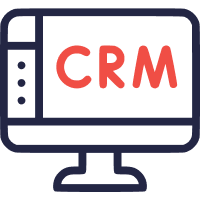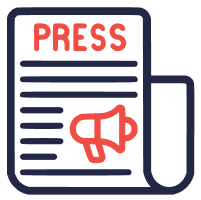As a sales leader, if you’re spending your month and quarter-ends calling up leads in haste, you know the importance of a healthy sales pipeline for your business. An efficient pipeline management takes you from a stressful quarter to a smooth flow of deals.That's why sales pipeline management isn't a one-time exercise, rather it's a full-time job, quarter after quarter. It takes a lot of attention and focus to handle upcoming leads without dropping any active deals.We’ve got the secret. In this blog, we'll provide a high-level overview of all pipeline-related things. Here's what we'll cover:What is Sales Pipeline Management?
- Importance of Sales Pipeline
- Sales Pipeline Management Best Practices
- AI-Guided Sales Pipeline Management
- Best Sales Pipeline Management Tool
- Who Should Use the Sales Pipeline CRM?
What is Sales Pipeline Management?
A sales pipeline management system helps the sales managers identify open sales opportunities that are about to vanish, without losing attention from active deals. Thus, it helps resolve issues at each sales funnel stage and drive more revenue.In simple terms, a sales pipeline management system provides a view of funnel stages that each lead goes through. As prospects move from being a new lead into a customer, the system shows you how many leads your sales reps are expected to close with respect to their sales target.
Importance of Sales Pipeline:
Sales pipeline provides you a complete visual representation of where your new leads are in the sales funnel stages, such as awareness (prospecting and lead qualification), interaction (demo meeting and follow-up calls), interest (proposal and negotiation), and action (deal finalization and close). It also recommends actions your sales reps should take to convert a lead into your customer.
Sales Pipeline Management:
The journey of a sales opportunity in your pipeline drive differs from lead to lead. It depends on their interest in your products and services, budget, urgency-level to buy, etc. At times, there could be leads who’ll skip a few funnel stages of the sales pipeline. For instance, if a lead already knows your product and is ready to buy, you can directly move the opportunity to the final stage of your sales pipeline.
Sales Pipeline Management Best Practices
Here are the 10 best practices to manage your sales pipeline effectively:
- Follow up With Leads: You will end up losing leads and associated revenue if your follow-up process isn't robust enough. Your reps should contact them at the right time and engage with them through demos, product content, etc. With a robust follow-up process, you'll build healthy pipelines and know exactly when to qualify or disqualify leads.
- Do Not Allow Your Pipeline To Rot: Clean up your sales pipeline regularly to get accurate sales forecasts. That's because sales forecasts use the funnel stage for each opportunity while predicting a win or loss. For example, consider you've sent a proposal of $5,000 to a lead a week ago, but you didn't receive any reply since then. Your sales forecast will count that lead as potential revenue and your forecast data will keep showing off by that amount. Such gaps will continue to grow until you remove the dead opportunities from your sales pipeline.
- Never Reduce Your Sales Pipeline: When an organization generates a lot of leads and sales reps complete all the targets, reps tend to become complacent. They stop prospecting and later face an empty pipeline with no opportunities to pursue. Hence, ensure that your reps continue to prospect regularly so that your sales pipeline grows continuously.
- Regularly Conduct Pipeline Reviews: Increase the number of opportunities to automatically increase the flow of leads through your sales pipeline. Spend time with your reps to define the lead, opportunity, and conversion process. Once the team is clear on the process, the forecast can be easily tracked and scaled. This will also help conduct regular pipeline reviews.
- Know Your Sales Metrics: Sales involves a lot of numbers, and you can understand your pipeline drive only if you completely know your metrics. That's why sales leaders must always stay on top of these figures. They could be win rate, loss rate, sales cycle length, opportunities to close deals conversions, number of leads generated in a month, and a lot more. Check that you have accurate data inputted at every sales stages in CRM, as inaccurate data can hamper efficiency.
- Shorten Your Sales Cycle: If you have a shorter sales cycle, you can spend more time on selling to prospects. On the reverse, a longer sales cycle gives your prospects enough time to change their minds and seek an alternative. That's why you must schedule the next meeting exactly at the end of each meeting. Don’t force your prospects into long agreements, but push for a quick and clear timeline that works for all.
- Effectively Use Content for Sales Enablement: The more content your sales reps have at their fingertips for sales enablement, the easier it will be for them to sell in any situation. Sales enablement content can be in the form of whitepapers, blog posts, case studies, product sheets, roadmaps, and playbooks. As leads move up the pipeline, they have unique questions and reps need different content to close them.
- Train Your Reps on Pipeline Management: It's a known fact that sales teams with properly trained reps earn more revenue as compared to those without. Ensure that each rep understands your complete sales process. All the reps must know the exact thing to do at each funnel stage, and be able to adjust based on business size, industry, and changing market dynamics.
- Identify and Target the Right Prospects: Sales reps often spend too much time chasing the wrong prospects who do not match your target persona. Such mismatched prospects clutter your sales pipeline and lead to wasted efforts. Hence, always nurture the right prospects rather than having a lot of meaningless conversations. A pre-call checklist can be very useful here.
- Use a Tool to Manage Your Pipeline: It's hard to track leads manually, especially when your pipeline is overflowing with leads. Plus, not all leads would be in the same funnel stage. An Excel spreadsheet can help only when you're a one or two-person team. When your sales business grows, you'll have to manage thousands of prospects over months or years. The best way to handle this situation is by deploying a sales pipeline management tool.
AI-Guided Sales Pipeline Management
Advanced technologies, such as artificial intelligence (AI) and machine learning (ML), can offer deeper insight into the health and potential of your sales pipeline. AI-based guidance offers a data-driven, objective option that helps sales teams maintain pipeline growth and boost revenue. This is especially helpful during unprecedented and turbulent times such as the Covid-19 pandemic. Here’s how AI-guided selling can help nurture your sales pipeline.
Adaptation: Quickly Adapt to the Current Situation
- Covid-19 Risk Indicators: How can AI guidance help you overcome obstacles of uncertainty? AI draws wisdom from deep learning of vast data sources to guide you on the right path to conquer even the most formidable of challenges. Without a precise understanding of the pandemic’s economic impact on the pipeline, teams can be led astray by their own predictions and evaluations. AI-guidance offers risk indicators that provide sales teams with a robust appraisal of how the pandemic is affecting their current pipeline drive on the deal level.
Generation: Build a Robust Pipeline
- Pipeline Planning: Sustained revenue is only possible when your pipeline strategy is long-term. By planning for the future, you can lay out a strategic pathway for your team to pursue and course-correct when necessary. AI can offer insight into potential future pipeline and helps teams determine an optimal mix of opportunities for success.
- Pipeline Building: Before sales teams can successfully build pipelines, they must first have a sufficient foundation. AI-guidance helps you identify if the next quarter will start with enough pipeline. Teams are notified when pipeline generation slows in specific regions or segments so they can respond as needed.
Growth: Expand and Grow Your Pipeline with AI
- Pipeline Health: Maintain the health of your pipeline with periodic objective health check-ups. Advanced analytics provide a data-driven assessment as opposed to CRM self-reports. Teams can compare pipelines at the start of the quarter to new pipelines added to ending pipeline predictions, as well as compare human and AI forecast predictions to determine the source of discrepancies.
- Intelligence Reports: AI-based intelligence reports show the progress of your past, current, and future pipelines so that you can better understand your pipeline acceleration and evolution through the quarter and evaluate the quality of the current and future pipeline.
- Pipeline Nudges: AI-based timely nudges provide sales teams with direct insight into deals at risk and what actions should be taken to advance on those deals.
Best Sales Pipeline Management Tool
With sales pipelines becoming too big and complex, the days of tracking them manually are over. Even then, most companies struggle with their sales pipeline management as they cling to outdated tools that don’t offer the level of insight you’ll find in modern sales pipeline software.
Sales Pipeline Management Tools: If you aren't using modern tools, you’re losing sales to your competitors. But don’t worry, we’re here to rescue. Aviso helps sales teams understand and interrogate their sales pipeline, assess pipeline health, and get advanced insights to plan and build new pipelines. Aviso, being the best sales pipeline management tool, helps in three key areas:
- Pipeline Inspection: Our AI guided pipeline analytics helps with objective, unbiased pipeline inspection. Sales teams can assess pipeline health by comparing the start of the quarter pipeline and new pipeline added to ending pipeline predictions. The tool suggests when and where reps need to strengthen their pipeline management. With AI-driven insights, your sales forecast can better inform pipelines to drive timely team actions.
- Pipeline Reports: Our pipeline reports show the historical, current, and projected pipeline status. It helps sales leaders learn how their pipeline has evolved over the quarter and understand the quality of current and future pipeline. Reps can also compare historical pipeline progress during different time periods to get insight on how different deals affect pipeline health.
- Opportunities Maps: Aviso Opportunity Maps (a.k.a. Deal Maps) help manage high-risk deals using AI. The AI automatically searches the entire portfolio and identifies deals that are likely to close. It helps sales teams run their forecast calls in a better way with specific guidance on key deals.
Who Should Use the Sales Pipeline CRM?
Sales pipeline CRM is an important tool for sales managers and sales reps who juggle with many prospects and deals at the same time, and still do not successfully manage any of them. They cannot afford to let any prospect slip through the cracks. It’s also an important tool for go-to-market organizations who want to know more about how well their sales process is going. That's because a CRM pipeline management tool tracks each sales reps' activities. It also offers complete visibility into which sales activities are providing the most return.
Learn more about Aviso’s pipeline acceleration capabilities or contact us today to see how we can help you and your team manage your sales pipeline.

















 BY USECASES
BY USECASES
 BY CRM INTEGRATION
BY CRM INTEGRATION
 COMPARE
COMPARE















